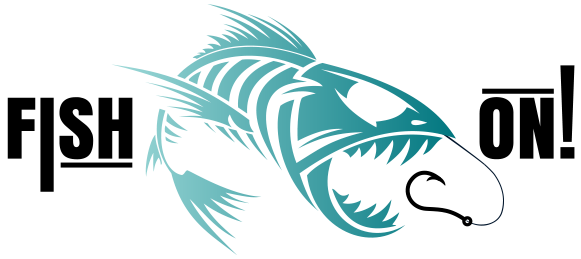Offshore Fishing in St. Petersburg, FL: Secrets for a Successful Trip
Share
Offshore fishing in St. Petersburg, Florida, is an incredible experience, offering anglers a chance to catch a variety of hard-fighting fish in the clear, blue waters of the Gulf of Mexico. With its strategic location, St. Pete serves as a gateway to bountiful fishing grounds, from the artificial reefs and shipwrecks to the deeper waters of the Gulf. This guide will provide you with the essential knowledge to make your next offshore trip a success, covering everything from the fish you'll target to the science behind the best times to cast your line.
The keys to Offshore Fishing in St. Petersburg - The Hunt: Species to Target in St. Pete's Waters
The offshore waters near St. Petersburg are a veritable playground for anglers, teeming with a diverse range of species. Knowing what's in season is key, but here are some of the most sought-after fish you can expect to encounter:
-
Grouper: Gag, Red, and Black Grouper are the kings of the bottom in these waters. Known for their powerful, a-lure-ing runs back to the reef, they provide an exhilarating challenge. You'll find them around rocky structures, ledges, and wrecks. Need some spots? FishOn has an exclusive Grouper spots package
-
Snapper: A favorite for their delicious table fare, Snapper species like Red, Mangrove, and Lane are abundant. They are often found in similar habitats to grouper, making them a common bonus catch. FishOn also has Red Snapper fishing spot packages that will put you on the ARS
-
King Mackerel: Also known as "Kingfish," these aggressive pelagic species are a blast to catch, especially when they're on a hot run. You'll often find them chasing baitfish near the surface, and they're a prime target for trolling.
-
Amberjack: These powerful fish are often called "reef donkeys" for a reason. They offer an incredible fight and are found in large schools around wrecks and reefs in deeper water.
-
Other Pelagics: Depending on how far you venture out into the Gulf, you might also hook into Mahi-Mahi, Wahoo, Sailfish, and even Tuna. These big-game species provide the ultimate adrenaline rush for offshore anglers.
The Arsenal: Choosing the Right Bait
Selecting the right bait is a critical component of a successful fishing trip. While different species have their own preferences, here are some of the most effective options for offshore fishing near St. Pete:
-
Live Bait: This is often the top choice for enticing a bite. Live baitfish such as pilchards (often called "whitebait" by locals), pinfish, and threadfin herring ("greenbacks") are excellent for targeting a wide range of species. Live shrimp are also a universal bait that few fish can resist.
-
Dead/Cut Bait: For bottom-dwelling species like grouper and snapper, a dead bait can be just as effective, especially if you're trying to cover a large area. Cut bait from oily fish like mullet or cigar minnows releases a scent trail that attracts predators from a distance.
-
Artificial Lures: For anglers who prefer to work a lure, a variety of options can be highly effective. Vertical jigs are a favorite for bottom fishing, while trolling with plugs, spoons, and jigs can draw strikes from kingfish, wahoo, and tuna.
The Science: The Solunar Theory of Fishing
Many experienced anglers swear by the Solunar Theory, a hypothesis that fish feeding activity is influenced by the position of the moon and sun. This isn't just folklore; it's based on the gravitational pull of these celestial bodies, which affects not only the tides but also the behavior of marine life.
-
Major Feeding Times: These are the most active periods for fish. They occur when the moon is directly overhead (moonrise) and when it is on the opposite side of the earth (moonset). During these times, the moon's gravitational pull is at its strongest, creating a major movement in the water.
-
Minor Feeding Times: These are also very productive, though less intense than major times. They coincide with the moon's rise and set.
The key takeaway is that during both major and minor periods, the increased gravitational pull can cause more significant water movement. This, in turn, stirs up baitfish and other food sources, triggering a feeding frenzy among larger predators.
Tides and Moon Phases: A Fisherman's Clock
While the Solunar Theory provides daily feeding windows, understanding the moon phase and its effect on the tides is crucial for planning your trip.
-
New and Full Moons: These phases create the strongest gravitational pull from the sun and moon working in alignment. This results in spring tides, which have higher high tides and lower low tides, creating a stronger tidal flow. This increased water movement can be excellent for offshore fishing, as it pushes bait and creates current rips that stack up fish.
-
Quarter Moons: During the first and third quarter moons, the sun and moon are at right angles, causing a weaker gravitational pull. This leads to neap tides, with a smaller tidal range and less current. While some anglers prefer the slower currents of neap tides, the more significant flow during spring tides often provides the most consistent bite.
Putting It All Together
The beauty of offshore fishing in St. Petersburg lies in its dynamic nature. By combining a solid understanding of the local fish species and their preferred baits with the scientific principles of the moon and tides, you can dramatically increase your chances of a successful day on the water.
Whether you're departing from a local marina near the bustling St. Pete Pier or heading out from the quiet shores of Pass-a-Grille, always remember to check the tide charts and solunar calendars for the best times. Local knowledge is invaluable, so don't hesitate to consult with bait shops or fishing guides. By paying attention to these factors, you'll be well on your way to reeling in a trophy catch and creating unforgettable memories on the stunning Gulf Coast.

